The stories of Virginian Holocaust survivors have been reissued in a book chronicling the horrors they faced — and the heroism of their survival. Courtesy of United Jewish Federation of Tidewater’s Holocaust Commission
Jewish children hidden in Catholic orphanages in Belgium; parents and grandparents forced to choose which of their children to save in Polish ghettos; entire families hidden for months in underground tunnels in Ukrainian cities.
To Life: The Past is Presenta revamped edition of a book first published 21 years ago, features over 90 stories from Holocaust survivors, liberators and rescuers, all united by one detail: They all ended up in Coastal Virginia.
The Holocaust Commission of the United Jewish Federation of Tidewater in Virginia recently reissued the book.
Here are six of the stories it includes.
Dena Vernik
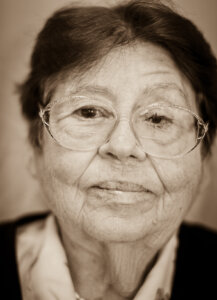
“As the Germans began to invade Russia, Dena Vernik’s mother never imagined that she would be faced with an awful quandary: choose just one of her two children to live,” writes Elena Barr Baum, who authored Vernik’s story in the book.
Vernik had just finished fourth grade when the Nazis invaded her birthplace of Odessa, Ukraine, in 1941. In October, the Nazis departed and massacred more than 90,000 Jews. The survivors, including Vernik, her grandmother Gitteli, her mother Tatyana and her brother Yakov, were forced to move to a ghetto, but Tatyana’s connections with non-Jewish citizens allowed the family to escape relocation, instead hiding in the homes of different families.
But the non-Jewish woman who was hiding Vernik, fearing arrest by the Nazis, handed her over to a Jewish woman who was on her way to the ghetto.
Gripped with desperation, Gitteli and Tatyana devised a plan to rescue her. Since non-Jews were the only ones allowed to enter and leave the Odessa ghetto, Gitteli convinced a non-Jewish woman to enter the ghetto with Yakov, Vernik’s younger brother, and then leave a few hours later with Vernik.
As difficult and painful as that choice was, Vernik said, it seemed like the only one possible to save at least one of the two children. Yakov was circumcised, and, if his hiding place had ever been uncovered, would have been unable to pretend to not be Jewish. The terrible but necessary plan worked, and Vernik went back into hiding with Tatyana in the homes of non-Jews until the end of the war. Gitteli and little Yakov died in the ghetto.
At the end of the war, Vernik moved to Moscow, where she became an engineer and lawyer specializing in scientific patents. But Soviet antisemitism held her back from success, she said: “As a Jew, a woman, and a non-party member, I rarely received a promotion, as Jews were not allowed to be anyone’s boss.”
Dena and her husband, David, moved to the U.S. in 1993, eventually settling in Norfolk, Virginia.
Manfred Burg and Greta Neumann Burg

The Burgs were “the king and princess” of Sosúa, a Caribbean island that hosted Jewish refugees during the Holocaust, their daughter Fay Silverman said. Both Austrians, they left Europe as children respectively in 1938 and 1941, only to meet in Sosúa. Greta’s father, who had become rabbi of the 700-person strong community, largely composed of refugees, invited all the inhabitants of the island to celebrate the couple’s wedding.
But while the Burgs’ escape from Europe opened up new possibilities, many of their family members were not so lucky. Fred Burg’s parents and brother were not able to escape, and did not survive the Holocaust.
“Several years ago, my father was traveling in Vienna with my sister Diana,” Silverman said. “While walking down a street, he suddenly stopped in front of a building he recognized and exclaimed: ‘That’s where they held me upside-down out of that window.’ He did not elaborate more.”
Greta and Fred immigrated to the U.S. in 1947 and 1948, and moved to Virginia in 1970. Greta Burg died in 1993, Fred in 2015.
The Klavan family
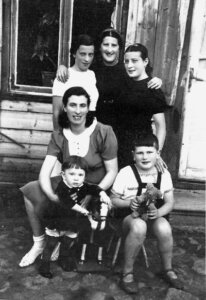
Edita Shapiro, a Lithuanian Jew, had made a successful life for herself in Kovno, Lithuania.
By the late 1930s, she owned a building which housed a dry goods store, a bar and a hotel.
She gave that life up after her sister, Ruth, managed to secure visas for much of their family after accidentally seeing a long line outside the American consulate.
Upon arriving in New York, Edita traveled with her sons Moishe (Marshall), who was 8, and Aizikas (Irwin), who was just 1, to join her husband Yeruchim (Edward) in Annapolis, Maryland. He had moved to the U.S. earlier that year, thanks to a job he secured through his extended family.
Several years later, the family moved to Norfolk, Virginia.
Edward, who was the only member of his family of origin to survive the Holocaust, passed away in 1975. Edita in died in 1986.
Frank Shatz
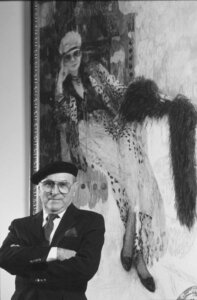
In 1944, Frank Shatz was deported to Romania by the Nazis, and sent to perform forced labor to build a railroad line over the rugged Carpathian Mountains.
“We were treated just like animals. If we dropped a rail and crushed another worker’s leg, the Nazis would shoot him,” he said. He no longer had value to them.”
One day, as the Allies were bombing Romania, Shatz managed to escape to Budapest, Hungary, where he was hidden in one of the “safe houses” established by Swedish diplomat Raoul Wallenberg. Some days later, he joined the Zionist underground and was provided with false identity papers.
He eventually fled communist Czechoslovakia with his wife Jarka in 1954; both were active members of the anti-Communist underground.They eventually settled in Lake Placid, NY, where Shatz founded a successful leather company, before moving to Williamsburg, Virginia.
The Virginia General Assembly has twice honored Shatz for sharing his story of survival and his commitment to Holocaust education in Virginia.
Kitty Friedenbach Saks
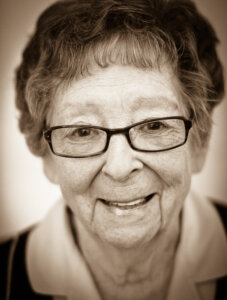
Saks grew up in Vienna as an only child in a prosperous family of jewelers and fruit merchants. The apartment in which she lived with her grandparents — who were deported and killed in a concentration camp — and her parents was immediately confiscated when Nazi Germany annexed Austria.
Hoping to flee to the U.S., Kitty and her mother Edith, under instructions from her father Leo, managed to escape Belgium, surviving devastating winter temperatures during the ordeal. But a few months later, the Nazis also conquered Belgium, and began mass deportation operations of the country’s Jews.
Kitty had to drop out of school. But thanks to one of her teachers, whom she called “a saint” and who was honored as Righteous Among the Nations by Yad Vashem in 1979, she entered a convent of Catholic nuns in Paridaens, under the non-Jewish false name of Rosette Nizole. She survived the Holocaust as one of the 3,000 “hidden children” hidden in Catholic convents throughout Europe between 1942 and 1944. “I was proud of my heritage,” she said. “After being baptized and learning my catechism backward and forward, I continued to say ‘Shema,’ the traditional Jewish prayer of faith, privately every night in secret.
Kitty eventually reunited with her parents after the liberation of Belgium in 1944, and then left in 1948 for Norfolk, Virginia, where she remained until she died in 2021.
Esther Wondolowicz Goldman
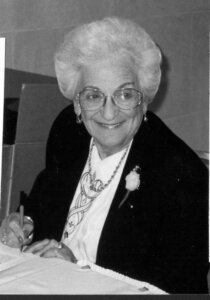
Goldman’s childhood in Sokoly, Poland was a happy one. But the invasion of Poland by Germany in 1939 thrust Esther and her large, Orthodox family into a world of fear and secrecy. After their house was burned down on Erev Rosh Hashanah in 1941, they went into hiding in a cemetery, before eventually being caught and sent to concentration camps like Birkenau and Auschwitz.
“We didn’t know what they were going to do to us, but then they spoke and told us to forget our names, that we no longer had names and, from this day forward …we ceased to exist, other than as a number. I became 34838,” she said.
The memories of the atrocities she witnessed, including the burning of children, haunted her throughout her life. After surviving a death march to Ravensbrück, she returned to Poland.
There, she crossed paths with her older brother, Iser, who had survived the war as a partisan fighter. Seeking refuge, she relocated to Bialystock to reside with him and his newlywed wife.
They then moved to Łódź, where Esther encountered Chil Goldman (later known as Charles), her future husband and fellow concentration camp survivor. They married in November, 1945.
Eventually, Esther immigrated to the U.S. in 1957, where she worked as a tailor and seamstress and built a new life with Charles. She was an active educator about the horrors of the Holocaust throughout her life, and died on December 14, 2001.
















